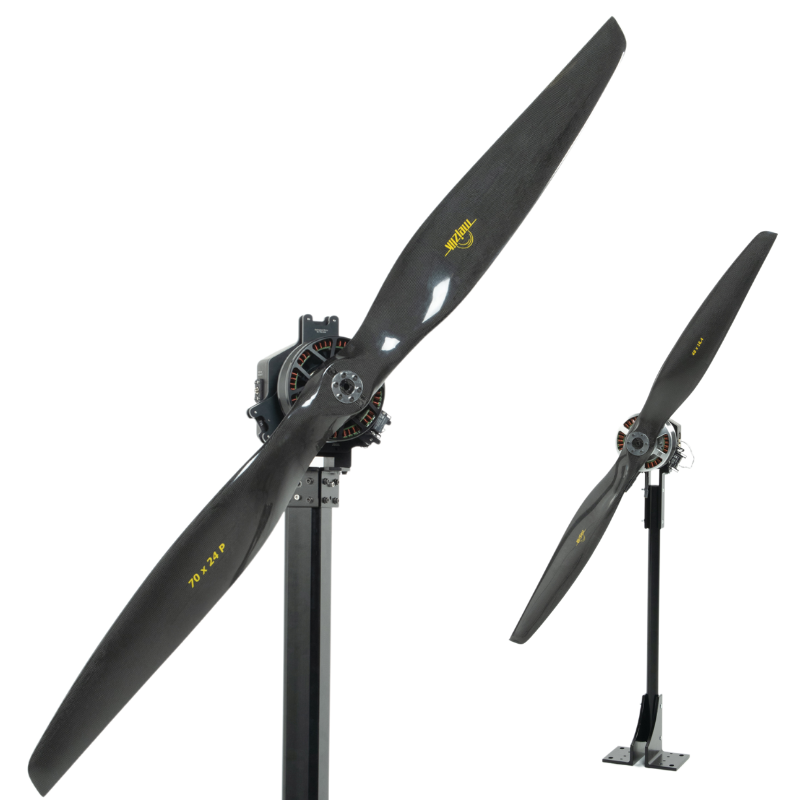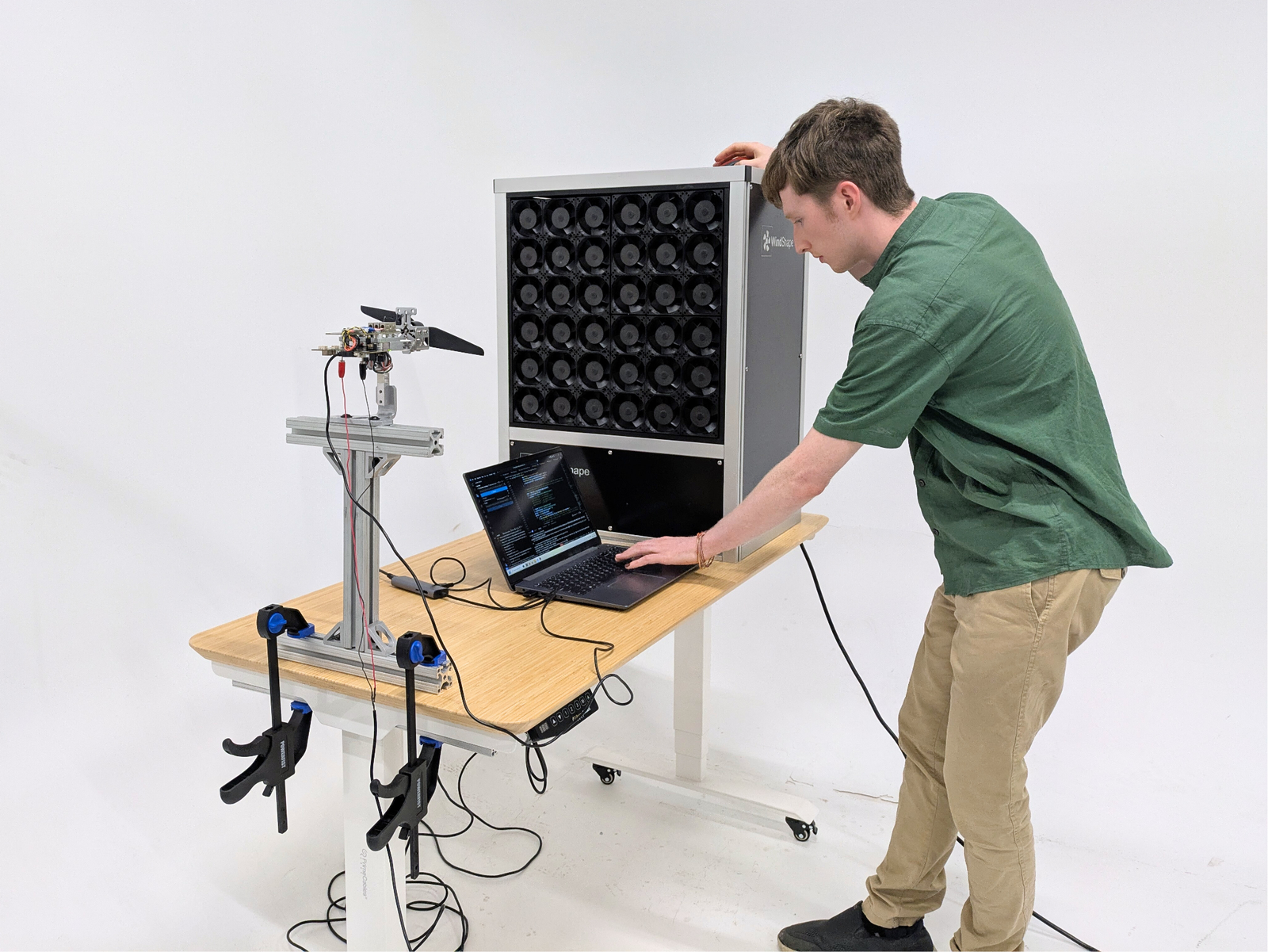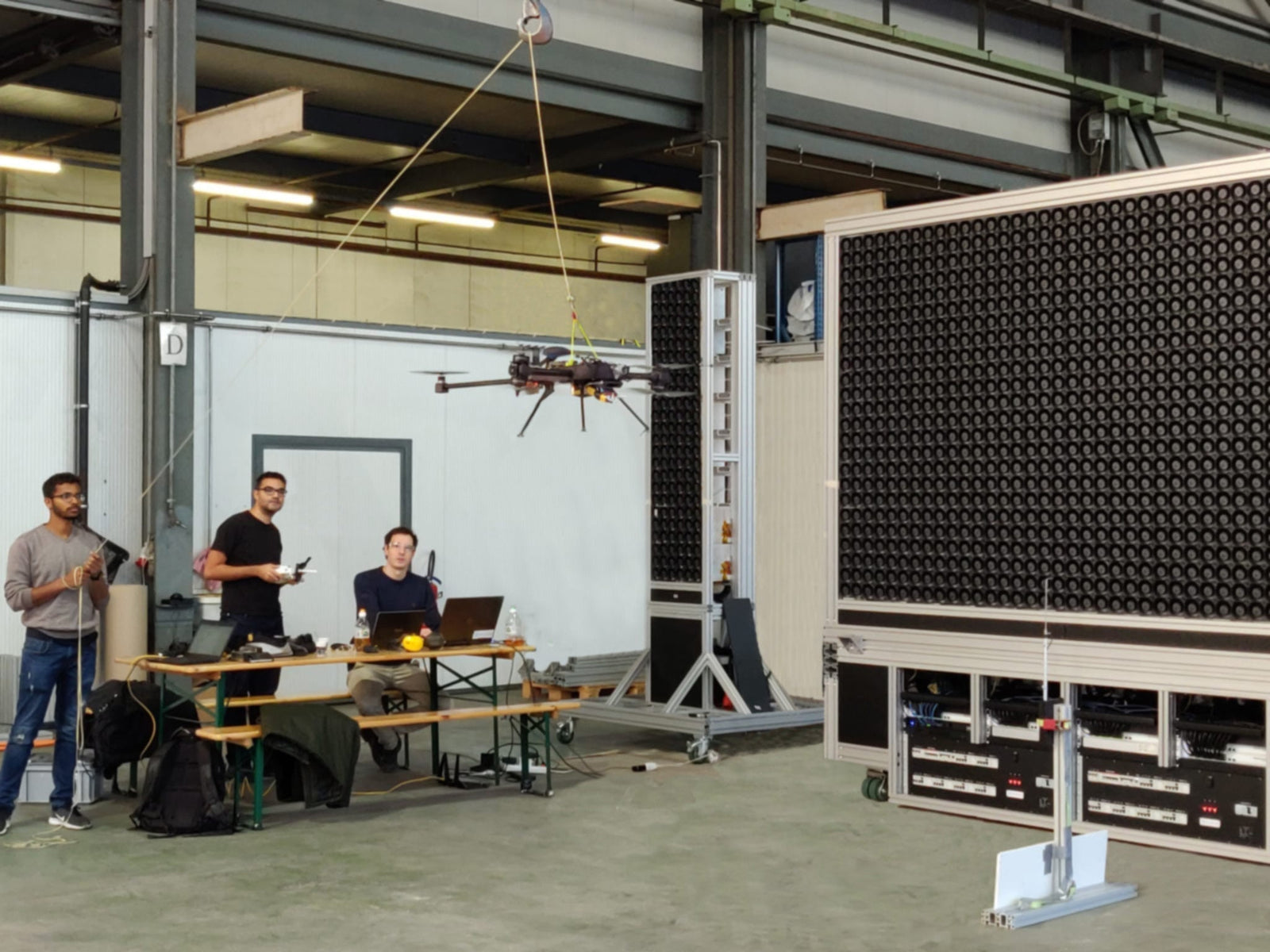Written by the Tyto Robotics team
Every year we have clients come to us after having attempted to build a thrust stand to characterize their motors and propellers.
Despite some clients reporting they achieved their objectives, many also mentioned the resources invested were not worth it, as they lost focus of the main goals of their project.
If you are trying to decide whether to purchase or build a thrust stand yourself, we encourage you to read this article. It may bring to light some factors you haven’t considered, such as:
This industry is extremely competitive and we know that time to market is critical. Our test stands are generally in stock so you can start testing within a few days of placing your order.
If you are trying to decide between different thrust stand models, check out our in-depth comparison of the Best Thrust Stands for Drones.
(Please note that this article refers to professional drone builds and test stands.)

Figure 1: An early thrust stand prototype and the more recent Flight Stand 15
1. Electromagnetic Considerations
Motors generate a huge amount of EMI, which tends to add noise in measurements and can make USB dataloggers crash (as we have discovered through R&D). These problems are hard to identify and it is best to carefully design and simulate electrical connections early. Time needs to be set aside to diagnose EMI issues, and an electronics engineer with expertise in power electronics, EMI, and grounding should be consulted.
2. Finding the Right Load Cells
Based on our research, a commercial multi-axis load cell (that measures torque and thrust simultaneously) is difficult to source with the proper ratio of thrust/torque. This usually means one of the two measurements will not make use of the load cell’s full scale of measurement, resulting in lower accuracy. Furthermore, our load cells are designed to minimize airflow restrictions while maintaining a minimum thickness in order to test coaxial systems. Commercially available load cells will not have that level of specialization.
3. Calibration and Verification
Finding the right load cells is just the beginning, then designing a way to calibrate them and verifying the calibration is an additional task. For powertrain testing, thrust and torque are never present alone; it is important to calibrate the load cells as close to its operational condition as possible, which means to calibrate both thrust and torque at the same time and to take crosstalk into account when generating the polynomial. Without a calibration machine, there is also no way to re-calibrate them after many hours of use. That is why we calibrate all of our load cells in house to ASTM standards and offer our clients the option of a yearly re-calibration for their force measurement unit.
4. Developing a Software
When we developed our new generation of test equipment, redesigning the software took just as long as redesigning the hardware. The complexity of the software depends on what features you want, but controlling the test stand and data logging are the bare minimum you’ll need.
The Flight Stand software (figure 2) controls the test stand via manual or automated tests, displays live data on customizable plots, stores and displays saved data, prepares data for export, and has many additional features for data processing (see part 5). In addition, it does all this simultaneously at a 1,000 Hz sampling rate.
Figure 2: The GUI of the Flight Stand Software
5. Data Processing
Beyond recording data, the way the data is processed can have a large impact on your workload. We’ve added several data processing features to our software to make data handling and analysis easier:
- Adding a low-pass filter option to smooth out data
- Data resampling at different frequencies
- Powertrain mapping
These features take time to program, but they save time for the user and are highly practical.
6. Safety and Mechanical Tests
Some unexpected challenges when designing a test stand can include identifying the stand’s resonance frequencies and finding ways to limit vibration. Without knowing the resonance frequencies, you are more likely to damage the stand and your propulsion system. With vibration, there is always a trade-off between stability and measurement accuracy, and it can be challenging to find the sweet spot.
7. Coaxial Testing Configurations
After mastering a single-rotor testing set-up, there is the possibility you will want to test dual motors in a coaxial or offset configuration. Face-to-face propeller configurations are simple enough, but back-to-back configurations, as is seen in many quadcopters, are more of a challenge. Getting the rotors reasonably close to one another takes careful design and planning. With our Flight Stand 15/50 (figure 3), coaxial stands can safely operate in a back-to-back configuration with only 9 mm of separation, which comes to about 150 mm of separation between motors.
Further reading: Best Coaxial Configuration for UAVs (Tested)

Figure 3: Flight Stand 50 in a back-to-back coaxial configuration
8. Designing a Compact Solution for Minimum Airflow Disturbance
Another factor that takes significant development time is designing a compact test solution. If the test stand itself interacts too much with the airflow from your propellers, it will affect your readings. Building a compact solution that doesn’t compromise on stability is a lengthy endeavor.
One of our priorities when redesigning our test stands was to have a compact design that would interfere with the airflow less than or little more than the motor itself.
9. Imprecise Measurement Leading to Under-performance
This is a consequence that all drone builders dread: you’ve built an aircraft based on data you thought was reliable, and now you’re facing a situation where your prototype’s performance is less than what was expected/promised.
Our test stands have an error rate of <0.5%, so you can be sure the results are highly accurate. Just ask Marc Stollmeyer from Inspired Flight.
Conclusion
Our test stands may not always fit your project requirements, but we hope after reading this article, you will have the knowledge to make an educated decision on whether building your own test stand or purchasing one is best for your project.
If you would like to use a reliable, professional test stand to get results you can have confidence in, we invite you to learn more about our products:
Click here for the Series 1580 - up to 5 kgf of thrust and 2 Nm of torque
Click here for the Flight Stand 15/50 - up to 50 kgf / 30 Nm
Click here for the Flight Stand 150 - up to 150 kgf / 150 Nm
Click here for the Flight Stand 500 - up to 500 kgf / 1500 Nm
Click here for the Flight Stand 60 - engine testing up to 60 kgf / 30 Nm


 Back to Blog
Back to Blog


Leave a comment